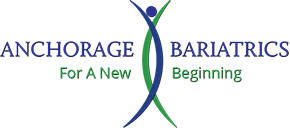ANCHORAGE BARIATRICS
FOR A NEW BEGINNING
Invest In Yourself And Be The Best You Can Be

In your list of priorities, where do you fall? Are you first or last? Are you even there?
Often, we put ourselves last because we think “I can wait,” but as life happens that list just gets longer and longer until “you” fall off the bottom. Don’t let that happen. Like Warren Buffet said, “The best investment you will ever make is in yourself.” Think about it, if you don’t invest in yourself and you break down, how do you suppose you’d accomplish that list of yours? Invest in your health so you can fuel your body (and mind) to be the best that you can be!
Caring for you – your health and well-being – is the most important investment you could ever make, because when you’re whole, you can do more, give more, help more, and live more!
IMPORTANT ANNOUNCEMENT: Beginning February 1, we will be in network with Aetna! Call today to book your appointment 907-644-THIN
Our next Support Group is Wednesday, February 6 and the topic is “Ask your surgeon” with our very own Dr. Justin Clark. Support groups are FREE and open to everyone! The meeting will be from 5:30 PM – 6:30 PM in the Willow Room (adjacent to the cafeteria) at Providence Hospital. Click here to register!
If you would like more information about how Anchorage Bariatrics can help you with a customized weight loss solution, would like to attend a free informational seminar, or our Monthly Support Group, please call us at 907-644-THIN.
 Health Is Wealth: 14 Simple Tips To Stay Healthy
Health Is Wealth: 14 Simple Tips To Stay Healthy
1. Avoid food that is high-calorie, low-nutrient.
2. Breakfast Is A Must
3. Avoid Mindless Eating
4. Check The Nutrition Labels
5. Avoid Pessimistic Thinking
6. Balance your Diet
7. Avoid Late Night Meals (Having meals on time is as important as having a healthy meal.)
8. Exercise
9. Don’t Sit Continuously For Long Hours
10. Avoid Smoking
11. Control Your Drinks (Alcohol is empty calories, and also reduces your immune system.)
12. Use Less Salt
13. Have Lots Of Fluid
14. Get Enough Sleep (To rest and recharge so you can operate at optimal levels.)
~www.stylecraze.com
 Tips for Using the Food Label
Tips for Using the Food Label
Most packaged foods have a Nutrition Facts label. Here are some tips for reading the label and making smart food choices:
Check servings and calories. Look at the serving size and how many servings you are actually eating.
***tip: If you eat 2 servings of a food, you will consume double the calories and double the % Daily Value (% DV) of the nutrients listed on the Nutrition Facts label.
Make your calories count. Look at the calories on the label and compare them with the nutrients they offer.
***tip: When you look at a food nutrition label, first check the calories, and then check the nutrients to decide whether the food is worth eating.
Eat less sugar. Foods with added sugars may provide calories, but few essential nutrients. So, look for foods and beverages low in added sugars. Read the ingredient list, and make sure added sugars are not one of the first few ingredients.
***tip: Names for added sugars (caloric sweeteners) include sucrose, glucose, high fructose corn syrup, corn syrup, maple syrup, and fructose.
Know your fats. Look for foods low in saturated and trans fats, and cholesterol, to help reduce the risk of heart disease. Most of the fats you eat should be polyunsaturated and monounsaturated fats, such as those in fish, nuts, and vegetable oils.
***tip: Fat should be in the range of 20% to 35% of the calories you eat.
Reduce sodium (salt); increase potassium. Research shows that eating less than 2,300 milligrams of sodium (about 1 tsp of salt) per day may reduce the risk of high blood pressure. Older adults tend to be salt-sensitive. If you are older or salt-sensitive, aim to eat no more than 1,500 milligrams of sodium each day – the equivalent of about 3/4 teaspoon. To meet the daily potassium recommendation of at least 4,700 milligrams, consume fruits and vegetables, and fat-free and low-fat milk products that are sources of potassium, including: sweet potatoes, beet greens, white potatoes, white beans, plain yogurt, prune juice, and bananas. These counteract some of sodium’s effects on blood pressure.
***tip: Most sodium you eat is likely to come from processed foods, not from the salt shaker. Read the Nutrition Facts label, and choose foods lower in sodium and higher in potassium.
~health.gov


